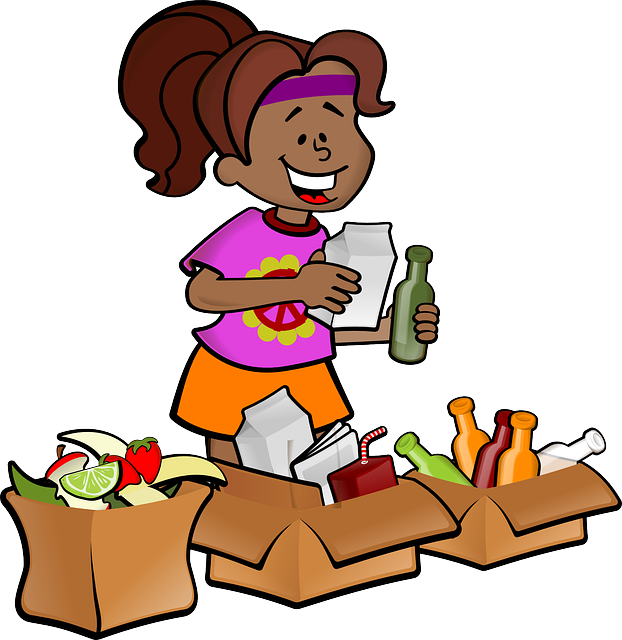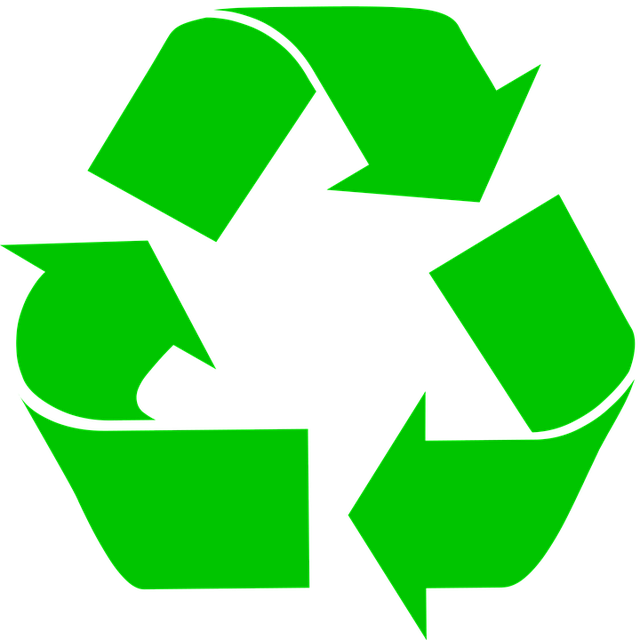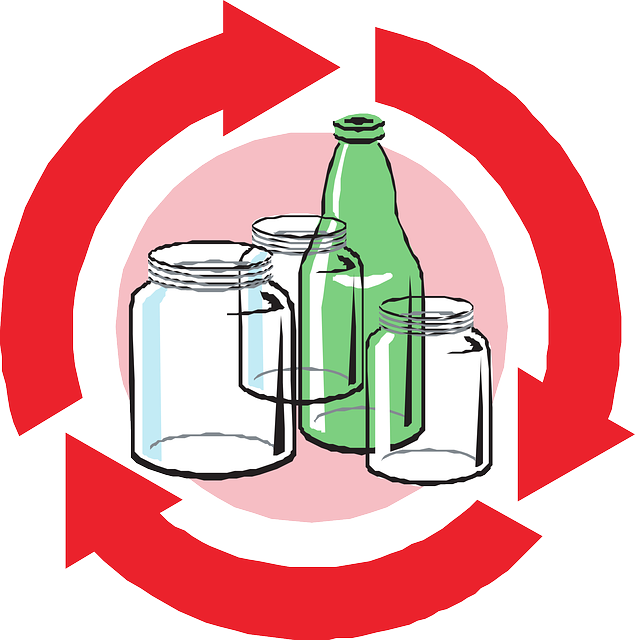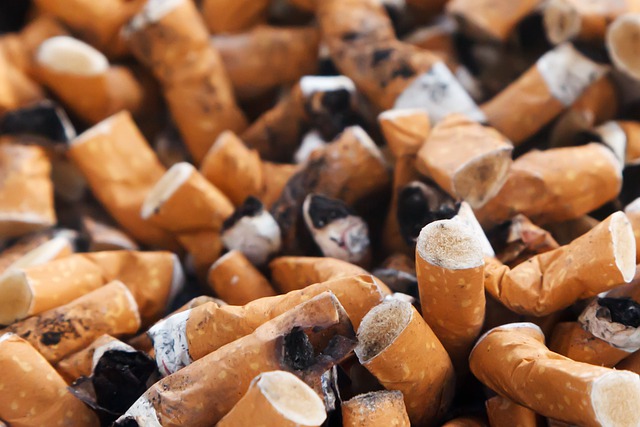by Valerie Garforth, FAUSA
Manufacturers would like us to think that recycling is the answer to our waste problem: buy, use, recycle – easy –  our consciences are clear. But is it? And are they? Humankind (7.6 billion people) produces 2 billion tonnes* of waste per year and of that, perhaps 20 percent is recycled. It is estimated that the US produces 250 million tons* of trash annually, 75 percent of which could be recycled or composted, but actually only about 34 percent is. Of the items which go into the recycling stream, large amounts are rejected and go into landfills. In 2016, in Lucas County, Ohio, out of 22,000 tons of trash that were diverted to recycling, 37 percent was rejected due to contamination. Germany has the best recycling rate in the world,** followed by Austria, South Korea and Wales: they each recycle between 52 and 56 percent of their municipal waste – but what happens to the remaining 50 percent of waste?
our consciences are clear. But is it? And are they? Humankind (7.6 billion people) produces 2 billion tonnes* of waste per year and of that, perhaps 20 percent is recycled. It is estimated that the US produces 250 million tons* of trash annually, 75 percent of which could be recycled or composted, but actually only about 34 percent is. Of the items which go into the recycling stream, large amounts are rejected and go into landfills. In 2016, in Lucas County, Ohio, out of 22,000 tons of trash that were diverted to recycling, 37 percent was rejected due to contamination. Germany has the best recycling rate in the world,** followed by Austria, South Korea and Wales: they each recycle between 52 and 56 percent of their municipal waste – but what happens to the remaining 50 percent of waste?
Recycling has the potential to significantly reduce waste going to landfills, to conserve energy and natural resources, and create less pollution by helping humankind to move from a linear economy (harvest/mine = take – manufacture = make – use – dispose = landfill) to a circular economy (make – use – reuse – recycle – make again). We will look at the circular economy in more depth in another article. Before we get to recycling, we need to (1) refuse what we do not need (excess packaging, plastic and Styrofoam, single-use items, fast fashion, etc.), (2) reduce what we do need (food waste, meat and dairy, heavy duty cleaning products, etc.) and (3) reuse, repair, repurpose what we have to keep it out of the waste or recycling stream as long as possible.
What is recycling?
 What is recycling, after all? It is a closed loop, or circular system; a perfect example is the way water circulates globally: fresh water falls as rain or snow and it percolates via rivulets, streams, and rivers until it reaches the salt oceans. Here it is taken up through evaporation as fresh water and forms clouds, which move towards the land and the cycle begins again. This is the great water purifying system that we have on earth! It is important to understand that the objective of recycling is to supply clean, new raw materials for new manufacture. That is why it is so important to make sure the items we put in the recycling bin are clean and acceptable locally. A woman once told me “Oh I recycle everything!” and my heart sank because I wondered exactly what she was putting in her recycle bin. This is called “aspirational” or “wish” recycling. We all need to check exactly what is accepted locally and “if in doubt, leave it out.”
What is recycling, after all? It is a closed loop, or circular system; a perfect example is the way water circulates globally: fresh water falls as rain or snow and it percolates via rivulets, streams, and rivers until it reaches the salt oceans. Here it is taken up through evaporation as fresh water and forms clouds, which move towards the land and the cycle begins again. This is the great water purifying system that we have on earth! It is important to understand that the objective of recycling is to supply clean, new raw materials for new manufacture. That is why it is so important to make sure the items we put in the recycling bin are clean and acceptable locally. A woman once told me “Oh I recycle everything!” and my heart sank because I wondered exactly what she was putting in her recycle bin. This is called “aspirational” or “wish” recycling. We all need to check exactly what is accepted locally and “if in doubt, leave it out.”
Contamination
Contamination is currently a huge problem for recycling: an entire load of recyclable paper can be rejected due to plastic, food waste or other types of contamination. This is where education is important: I looked in a recycling bin when picking up litter in an underserved neighborhood and found it full of trash. Even in the wealthier neighborhood where we live, the recycling containers have notices stating that paper, cardboard, and other recyclables should be loose and not in plastic bags. Nevertheless, we often find this request ignored.
We need to tackle the problems related to recycling: confusion about what materials can be recycled, leading to contamination; lack of recycling infrastructure, which has not kept pace with the diverse materials that are being produced, and lack of markets for recycled products. The US EPA has produced a draft National Recycling Strategy which identifies strategic objectives and actions needed to create a stronger, more resilient and cost-effective US municipal solid waste recycling system. The aim is to reduce contamination, enabling more material to be recycled and less discarded, resulting in better quality recycled materials. Increasing processing efficiency is an important part of this, including improved collection and materials management infrastructure, reduced contamination in the recycled materials stream and improved markets for recycled commodities. It will involve government/local administrations, industry and individuals. In June 2022, the US Bipartisan Infrastructure Law authorized $375 million in EPA funding for new recycling, reuse and waste prevention programs. The money will be used for education and outreach to increase public understanding of how to recycle correctly, as well as for development of uniform guidelines for recycling best practices. The plan is to reach a recycling rate of 50 percent by 2030.
What can – and can’t – be recycled
So, what can we, as individuals, do to play our part? First of all, we need to respect the items that we recycle, keeping them clean and free of debris. This not only improves the quality of the materials but it respects the people working in the recycling locations. (Check local policies in your area – some recommendations may differ.)
- Glass bottles and jars: virgin glass making is very energy intensive, so recycling glass saves energy. Items should be clean
 (I put them in the dishwasher and remove labels). Drinking glasses, glass objects and window glass cannot be placed with recyclable glass because they have different chemical properties and melt at different temperatures – they need to go into the trash.
(I put them in the dishwasher and remove labels). Drinking glasses, glass objects and window glass cannot be placed with recyclable glass because they have different chemical properties and melt at different temperatures – they need to go into the trash. - Paper and cardboard: these must be clean, with no food contamination unless your locality has a separate organics collection for compostables, which go to a digester. Shredded paper and supermarket slips are usually not acceptable.
- Milk, juice and soup cartons: These may be acceptable at your location but should be rinsed.
- Plastic: there are seven plastic designations (in the little recycling triangles), and it is important to check your local recycling requirements, but it is useful to remember that designations 1 and 2 are generally recyclable:
- PET (polyethylene terephthalate): examples are soda water bottles/cooking oil containers/food containers. Empty the bottles and leave the caps on. Buy large size containers and decant into smaller bottles – small containers and caps can get lost in the sorting process.
- HDPE (high density polyethylene): milk jugs/shampoo bottles/cleaning product containers and detergent bottles. Rinse out – add water to get the last drops of product out before recycling!
- PVC (polyvinyl chloride): plastic tubing/kids toys/plastic trays & furniture – not recyclable.
- LDPE (low density polyethylene): plastic wrapping/grocery bags/newspaper bags/fresh produce bags. Supermarkets may have special collection sites for these.
- PP (polypropylene): examples are yogurt/sour cream/food containers/straws/rope/carpet/bottle caps. These are sometimes recyclable – check.
- Polystyrene or Styrofoam is recyclable only in limited locations – again, check.
- Other: multiple plastic types that can’t be easily recycled.
- Metals and aluminum cans: these are energy intensive to produce and are welcome recyclables. Rinse out metal tins and empty soda cans.
- Hazardous materials and batteries: check for locations.
- Electronics: these are increasingly valuable as recyclables due to the rare metals they contain.
- Food: it is estimated that 35 million tons of food is wasted in the US each year – that is 40 percent of the food produced. Strictly speaking, recycling food waste means composting, but we need to reduce our food waste by buying less, eating smaller portions, improving storage, conserving or donating excess food.
- Cigarette butts (!): this is the number one litter item worldwide!! An estimated 8.9 billion are dropped each year, and they
 leach heavy metals into the environment. In Australia, a company called Fungi Solutions has managed to develop a strain of mushrooms that can digest the harmful components in cigarette butts, such as nicotine and a plastic called cellulose acetate. The fungi are able to render toxic substances non-toxic, and what is left undigested are heavy metals such as zinc, copper, and lead.
leach heavy metals into the environment. In Australia, a company called Fungi Solutions has managed to develop a strain of mushrooms that can digest the harmful components in cigarette butts, such as nicotine and a plastic called cellulose acetate. The fungi are able to render toxic substances non-toxic, and what is left undigested are heavy metals such as zinc, copper, and lead.
Benefits of recycling
Finally, some interesting facts about recycling: Recycling one ton of paper can save 17 trees, 7,000 gallons of water, two barrels of oil, and 4,000 kWh of electricity (enough to power one home for five months). Recycling just one aluminum can save enough energy to light a 10W LED light bulb for 20 hours and a TV for 24 hours!
We must demand that businesses create products from recycled materials and ones that are recyclable; we must demand better recycling programs, and we must close the loop by buying local and buy recycled. In order to recycle more, we have to recycle less, and we certainly have to recycle better!
*tonne = a metric ton = 1,000 kg; US ton = 2,000 lb = 910 kg
** German recycling figures exclude energy recovery from non-recycled organic municipal waste – probably effectively adding another 15 to 20 percent to waste recycled.
References and further reading
Keep Toledo Lucas County Beautiful Recycling Slide presentation - Cassi, A. (2022, July 1). Correct Recycling [PowerPoint slides]. Executive Director, Keep Toledo/Lucas County Beautiful
EPA National Recycling Strategy
European Parliament News - How the EU wants to creat a circular economy by 2050
Australian Repair Network (Right to Repair)
Wikipedia (linear and circular economies)
Don’t Feed the Landfills initiative Subaru of America
Ellen MacArthur Foundation (EMF)
All photos courtesy of Pixabay

